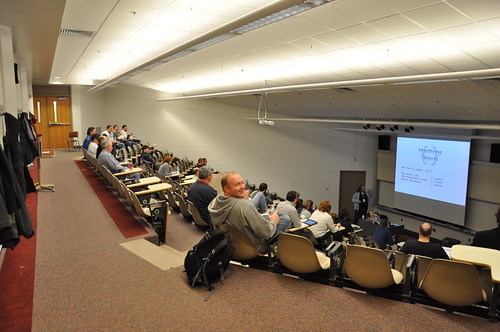I was recently asked by the author to review the second edition of “Kivy – Interactive Applications in Python” from Packt Publishing. I had difficulty recommending the first edition mostly due to the atrocious editing – or lack thereof – that it had suffered. It really reflected badly on Packt, and since it was the only Kivy book available, I did not want that same inattention to quality to reflect on Kivy. Packt gave me a free ebook copy of this book in exchange for agreeing to do this review.
At any rate, the second edition is much improved over the first. Although a couple of glaring issues remain, it looks like it has been visited by at least one native English speaking editor. The Kivy content is good, and I can now recommend it for folks who know Python and want to get started with Kivy. The following is the review I posted to Amazon:
—
This second edition of “Kivy – Interactive Applications and Games in Python” is much improved from the first edition. The atrocious grammar throughout the first edition book has mostly been fixed, although it’s still worse than what I expect from a professionally edited book. The new chapters showcase current Kivy features while reiterating how to build a basic Kivy app, and the book covers an impressive amount material in its nearly 185 pages. I think this is due largely to the efficiency and power of coding in Python and Kivy, but also to the carefully-chosen projects the author selected for his readers to create. Despite several indentation issues in the example code and the many grammar issues typical of Packt’s books, I can now recommend this book for intermediate to experienced Python programmers who are looking to get started with Kivy.
Chapter one is a good, quick introduction to a minimal Kivy app, layouts, widgets, and their properties.
Chapter two is an excellent introduction and exploration of basic canvas features and usage. This is often a difficult concept for beginners to understand, and this chapter handles it well.
Chapter three covers events and binding of events, but is much denser and difficult to grok than chapter two. It will likely require multiple reads of the chapter to get a good understanding of the topic, but if you’re persistent, everything you need is there.
Chapter four contains a hodge-podge of Kivy user interface features. Screens and scatters are covered well, but gestures still feel like magic. I have yet to find a good in-depth explanation of gestures in Kivy, so this does not come as a surprise. Behaviors is a new feature in Kivy and a new section in this second edition of the book. Changing default styles is also covered in this chapter. The author does not talk about providing a custom atlas for styling, but presents an alternative method for theming involving Factories.
In chapter six the author does a good job of covering animations, and introduces sounds, the clock, and atlases. He brings these pieces together to build a version of Space Invaders, in about 500 lines of Python and KV. It ends up a bit code-dense, but the result is a fun game and a concise code base to play around with.
In chapter seven the author builds a TED video player including subtitles and an Android actionbar. There is perhaps too much attention paid to the VideoPlayer widget, but the resulting application is a useful base for creating other video applications.
—
